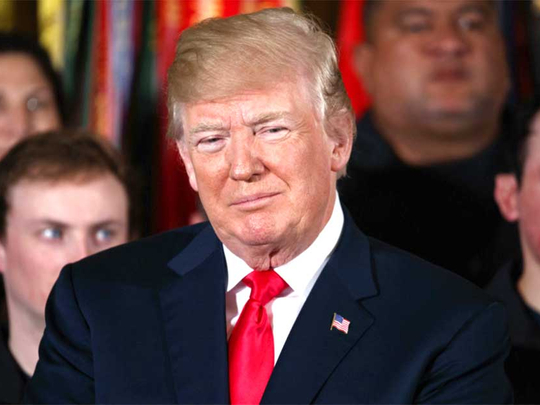
While he may have recently stunned many of his supporters and critics alike by announcing that he was willing to reconsider joining the Trans-Pacific Partnership (TPP) if the “conditions are favourable”, United States President Donald Trump should now persist, if he is serious about the TPP, in working towards rejoining this transnational pact with its overarching economic and security attributes.
One way is to show flexibility, instead of clinging to intransigent positions, so that the other 11 TPP members can also find it easier to welcome the US back. Trump has ordered senior administration officials to look into rejoining the pact, but there is delicious irony in the fact that when the US had the opportunity to lead the TPP, his first foreign policy act after assuming the presidency last year was to withdraw from the agreement. The TPP was aggressively pushed by former US president Barack Obama’s administration, which perceived it both as an economic and security vehicle to drive its ‘pivot’ to Asia which, many strategists feared, was falling into China’s orbit and needed to be countered with a strong and active American presence in Asia Pacific.
However, Trump’s reversal on TPP has not generated much excitement among the remaining 11 TPP members who recently signed in Chile what is now known as the Comprehensive and Progressive Agreement for Trans-Pacific Partnership (CPTPP). The first reaction of the 11 remaining TPP members to Trump’s remarks was subdued without being dismissive. Although there is widespread consensus that an economic heavyweight like the US would greatly benefit the remaining TPP members and elevate the TPP’s status, many of the remaining TPP members are averse to renegotiating with the US. This feeling was further hardened when Steve Ciobo, the Trade Minister of Australia, a staunch US ally, described TPP as already “well-balanced”.
Trump’s renewed interest in the TPP, as experts point out, has a lot to do with rising US-China trade tensions. It was no coincidence that Trump’s TPP announcement came after he heard Republican lawmakers complain about farmers and other businesses in their respective states being hit hard by Trump’s protectionist decision because they faced retaliation from countries that were markets for their products. Trump’s calculations include finding a way out for American farmers and businesses affected by Chinese tariffs. Robust TPP member countries such as Japan, Australia and some members of the Association of Southeast Asian Nations, could open up their markets for US products.
Chinese domination of the Asia-Pacific region has been worrisome to the remaining member-countries, particularly Japan, Australia, New Zealand and Singapore. Consequently, Japanese officials, for example have not been dismissive of Trump’s interest in the TPP and called for more details. Japanese Prime Minister Shinzo Abe could galvanise the remaining member states to sign the TPP in Chile.
Indeed, Singapore’s Ministry of Trade and Industry was vocal in welcoming the revived US interest.
However, It would also be naive to expect that achieving a new trade pact with the US could happen very soon. US trade experts are already busy trying to give finishing touches to the revised North American Free Trade Agreement with Canada and Mexico, the two other North Atlantic Free Trade Agreement partners, which want the removal of tariffs announced by Trump on their steel and aluminium products. These experts are also trying to sort out a number of complex trade disputes with China.
Of course, the US membership in the TPP could have steamed ahead faster had Trump decided to return to the pact in its original form from which he had withdrawn. His reversal on the TPP has also raised questions among many people who wonder whether the American president had made a well-planned, serious overture or just made yet another impulsive move with little or no substance. Though Trump’s populist protectionism has its supporters in the US industry, trade unions and others, he is at odds with many Republicans who traditionally support free trade. Should Trump seriously reconsider joining the TPP, he is sure to find support among many Republican lawmakers as well as trade groups, although trade unions would see this as a “betrayal” that repudiates his pre-election promise.
Wendy Cutler, the former acting deputy US trade representative, who had negotiated the TPP, told me during a discussion at the Asia Society in New York that Trump’s comment to reconsider joining the TPP was “encouraging” and that in due course, the administration would value the TPP. However, Cutler believes that the remaining 11 members may want a price to be paid for the US return to the TPP.
The US and the remaining 11 TPP members will need to demonstrate pragmatism and find ways and means to come to a broad-based understanding. The TPP members want the US in the pact not only because of its huge economic potential, but also to counter China’s growing belligerence. Trump, on his part, wants open markets for US products. These objectives are achievable if the US embraces the TPP and the remaining TPP members help the US embrace it.
International diplomacy works best when each side recognises the limits of the other side and both offer to accommodate each other.
Manik Mehta is a New York-based journalist with extensive writing experience on foreign affairs, diplomacy global economics and international trade.









